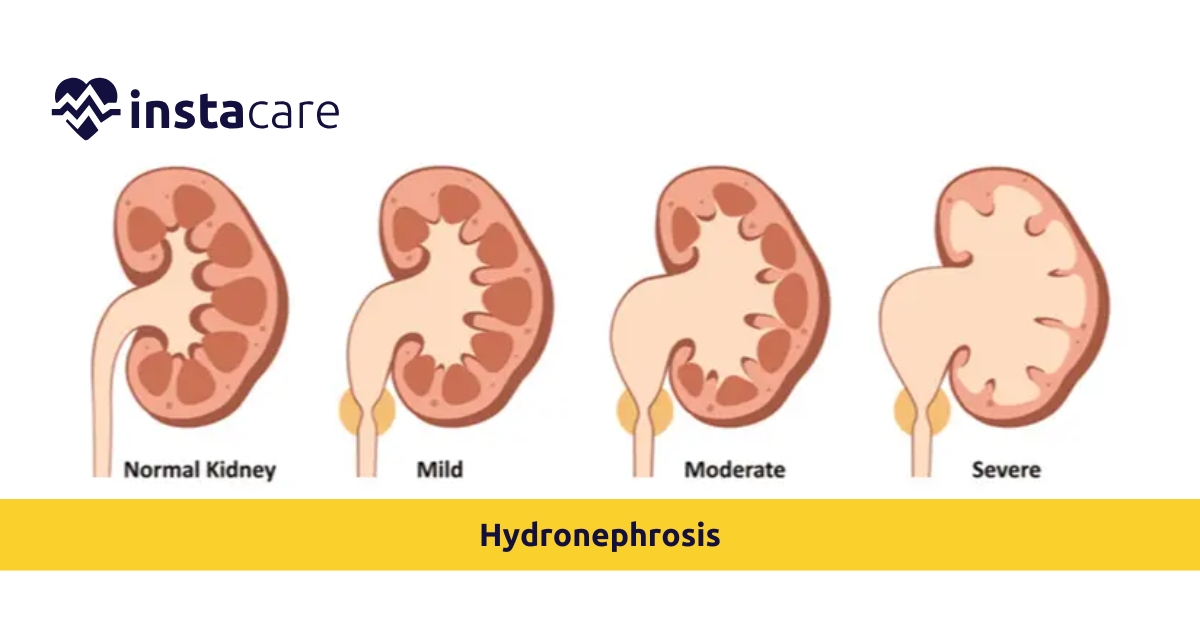Hydronephrosis occurs when urine retention makes one or sometimes both kidneys become enlarged. The condition emerges when urine drainage is obstructed in the urinary tract. Probable knowledge of Hydronephrosis requires both early diagnosis combined with right treatment methods. This article gives an explanation for this effect. What is Hydronephrosis? Hydronephrosis symptoms Cause, Treatment, all that and much more to have an understanding of the condition.
What is Hydronephrosis?
The blockage expands pelvic tissues and calyces, producing the urine accumulation known as hydronephrosis. The procedure triggers unilateral kidney effects when it restricts the functions of one kidney, but bilateral Hydronephrosis happens when the blockage affects both kidneys. Effective treatment and diagnosis methods are necessary for hydronephrosis, but this condition does not meet the medical criteria for a disorder class. It may happen at any age and is caused by a number of reasons, which require understanding its significance and taking treatment at the right time.
Symptoms of Hydronephrosis
Symptoms of Hydronephrosis are typically a function of the extent of obstruction and its etiology. Usually observed symptoms, he said are flank or back pain,
nausea and/or vomiting, urinary symptoms such as increased frequency or urgency, abdominal distention, and fever, if infection is present. Some individuals, particularly in the initial stages, might experience a total lack of symptoms in Hydronephrosis; however, with advancement, the frequency and severity of symptoms increase, usually sufficient to rule out other potential causes of symptoms to the extent of severe degree or perhaps severe Hydronephrosis complications.
Signs of Hydronephrosis
Identifying Hydronephrosis warning signs is essential, and thus active prevention may start. Other than the already-detailed warning signs, low urine output and hematuria, altered colour or consistency of urine needs to be observed. Regardless of size, you should visit a medic immediately if you find these signs. Early detection translates to improved treatment and prevention of clear-cut Hydronephrosis complication hazards, such as surgery.
Causes of Hydronephrosis
Numerous causes of hydronephrosis exist, including obstructions, congenital malformation, infections, and pregnancy. At some point along the tract, urine is blocked by tumours, calculi, or a stricture. A person born with structural problems in his urinary organs is at risk of developing Hydronephrosis. The urinary tract becomes dilated and blocked by infections, but pregnancy creates urine flow obstruction because the enlarging uterus compresses the ureters. Knowledge about such conditions helps physicians diagnose and treat Hydronephrosis.
Hydronephrosis in Children
Hydronephrosis in children may present due to congenital abnormalities or urinary tract obstruction.
Pediatric Hydronephrosis may not always be symptomatic; therefore, such children should be routinely evaluated. It can resolve spontaneously, although close follow-up should be conducted for the development of complications. Most paediatricians conduct an ultrasound during standard physicals to detect any Hydronephrosis as soon as possible so that it can be treated if required.
Two forms of Hydronephrosis
Two primary forms of Hydronephrosis exist:
- Acute Hydronephrosis
- Chronic Hydronephrosis
Conversion to chronic Hydronephrosis creates a combination of long-term kidney damage through prolonged periods of dysfunction. The body can develop chronic Hydronephrosis through diverse diseases besides prolonged obstruction that generally leads to its development. Chronic Hydronephrosis is characterised by recurrent UTIs and gradually progressive kidney dysfunction that can be managed by lifelong treatment to prevent serious complications such as renal failure.
Regular health check-ups of the kidneys will be required to monitor the state of the kidneys and treat the patient accordingly for an ideal restoration of health.
Diagnosis of Hydronephrosis
Hydronephrosis should be confirmed by a diagnostic evaluation relying mainly on various imaging procedures supported by laboratory evaluation. Some clinically useful diagnostic approaches include ultrasound scanning, CAT scan, and urinalysis. Ultrasound is a non-invasive test that visualises the kidneys and urinary tract, showing swelling or obstruction anywhere within.
The CT definitely gives more insight into the abnormality by imaging, but it gives definitions of the tissue involved in the pathology and some information regarding the cause of Hydronephrosis. Urinalysis is performed to detect blood, infection, or any other abnormality in the sample. An accurate diagnosis can thus be helpful in formulating the proposed treatment plan.
Hydronephrosis-Associated With Kidney Stones
Hydronephrosis has a different cause: a relationship to kidney stones. Potential to be apparent in such a patient is having a stone in the urinary system likely blocking the urine channel between the kidney and the bladder. This would result in enormous back pressure of urine creation in the kidneys, extremely painful, and most patients have to undergo the tedious process of stone removal or disintegration.
The way such kidney stones are managed is either by medications or increasing fluid intake, and invasive procedures like lithotripsy for crushing bigger stones. Such matters must be taken up concerning stones even before the complications of hydronephrosis develop.
Hydronephrosis Treatment
The treatment of hydronephrosis is directed toward the cause and extent of the condition. Treatment can be medical and surgical and includes drainage. Antibiotics combined with analgesics serve to relieve the pain in the presence of infection. The obstructive state would be a corrective surgical procedure with an intervention to relieve the obstruction or correct some abnormality found.
Drainage procedures, such as catheter placement, may also be indicated to relieve the pressure from the kidneys and allow for normal urine flow. Individualised treatment would account for the specific needs of the patient.
Surgery in Hydronephrosis
Obstruction by hydronephrosis is for individuals who obstruct severely or those who have an even deeper dent. That is part of doing the procedure-including ureteral stents, nephrostomy, or repairing the anatomical defect. Ureteral stenting means putting a stent within the ureter mouth for urine flow. Nephrostomy is putting tubing through the skin into the kidney to drain urine.
Anatomical defects may need repairing to avoid recurrences of Hydronephrosis. The selection of a particular surgical procedure would also depend on the specific case and condition of the patient.
Hydronephrosis Risk Factors
Being predisposed to hydronephrosis is high on the list of individual risk factors. Some of them are a family history of kidney diseases; previous
urinary tract infection history; current pregnancy; and stones or tumours in the kidney. Understanding these risk factors will help take proactive measures against this disease, including seeking intervention from health practitioners. Periodical consultation with a doctor and a healthy lifestyle will also help divert the odds of getting hydronephrosis.
Hydronephrosis Prevention
All activities in the prevention of hydronephrosis will finally fall under the control of risk factors and the general preservation of urinary tract health. Usually, prevention will be as simple as following post-treatment instructions with lots of fluids to prevent kidney stones or keeping the patient on regular medical visits regarding an established history of urinary tract issues. Early intervention and awareness of the symptoms are paramount in avoiding a situation that may not be reversible.
Conclusion
It is an essential and critical condition that everybody should be aware of, so suitability in case of action has to be taken fast. The better an individual knows the symptoms, causes, and treatment modalities, the better his or her care can be. In the case of a person suspecting Hydronephrosis, he or she is meant for proper evaluation and management from a health care provider.
This signifies an action in hydronephrosis and improves the quality of renal health in the individual as well as his or her well-being. Detecting early and treating early would thus result in better outcomes and complications avoidance. For this reason, being aware of Hydronephrosis and its effects on health is very important.
Please book an appointment with the
Best Urologist in Lahore, Karachi, Islamabad, and all major cities of Pakistan through
InstaCare, or call our helpline at 03171777509 to find a verified doctor for your disease.

